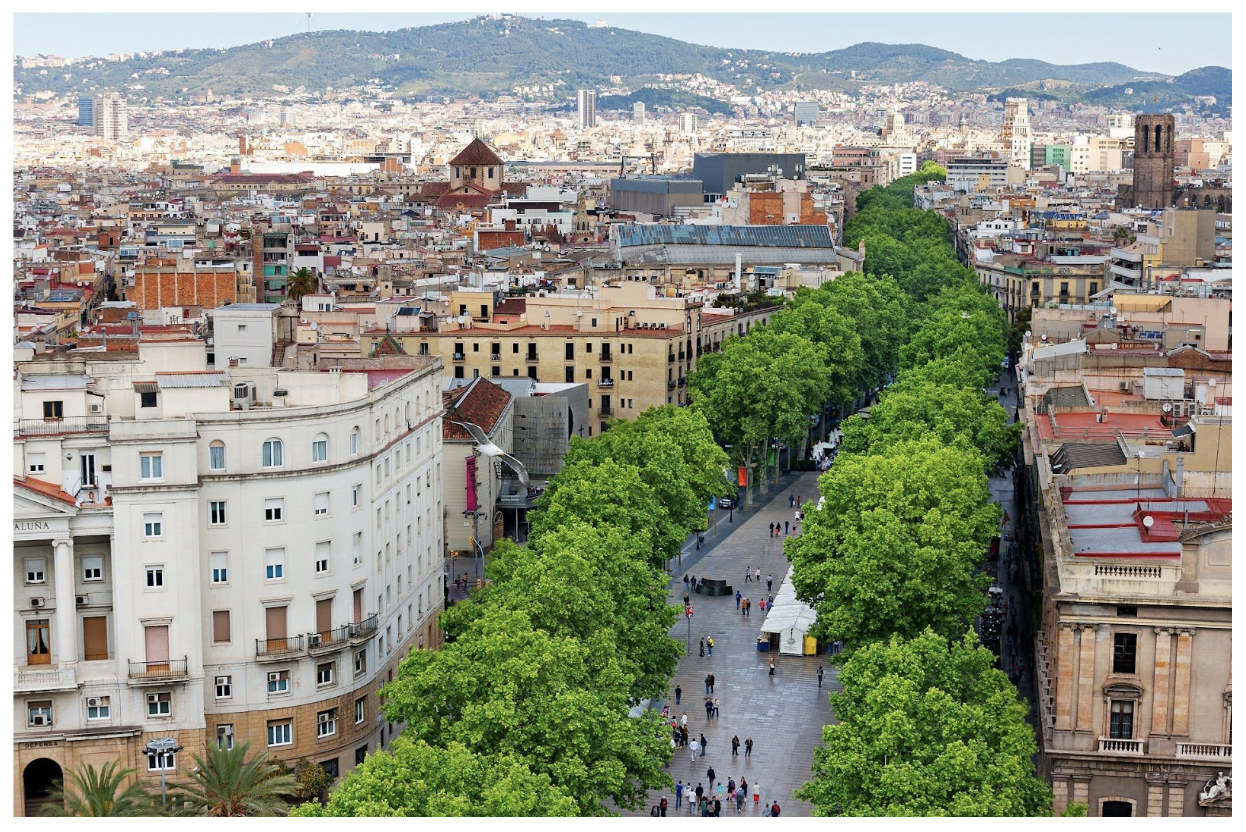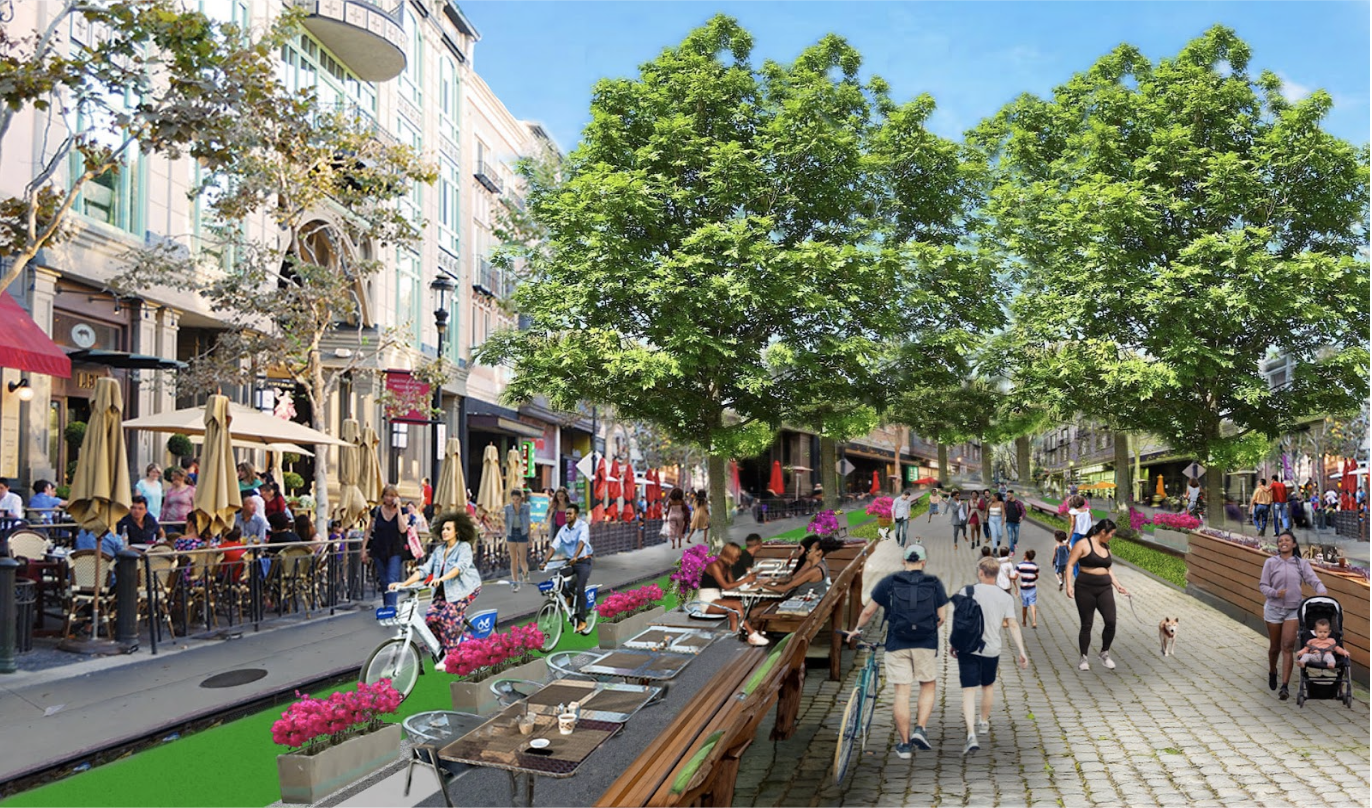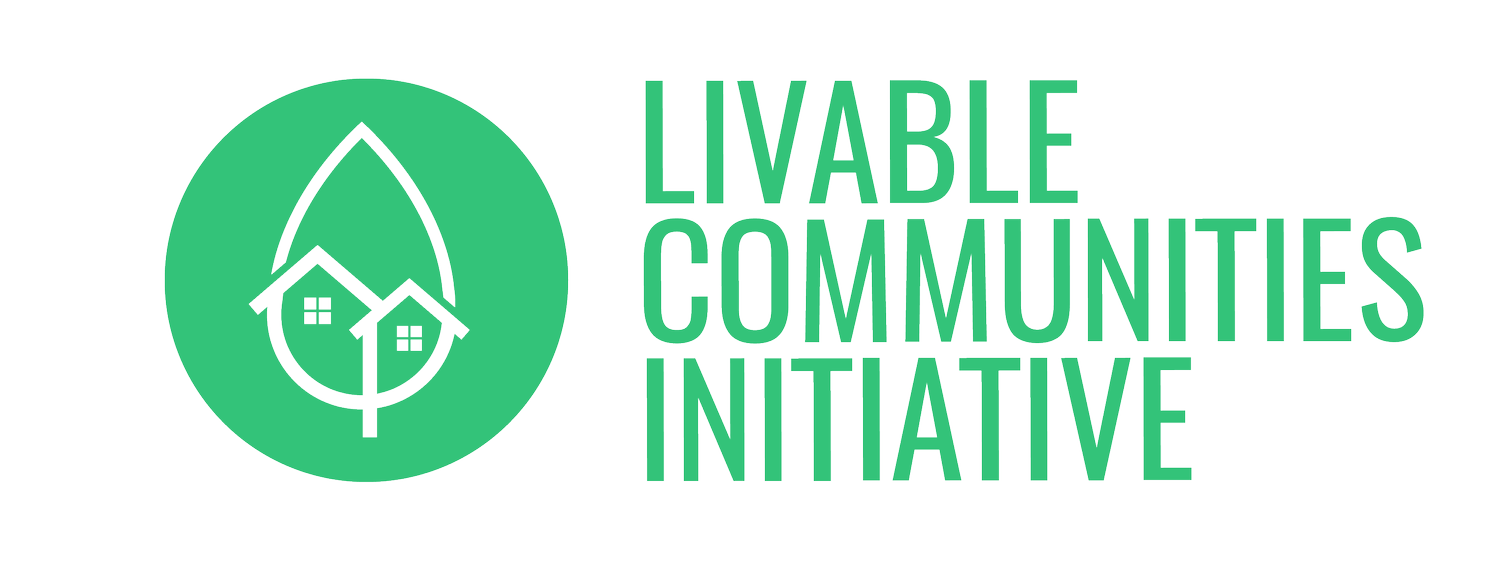The Civic City: Parks, Playgrounds, Promenades and Plazas
Infrastructure and amenities that help build community and improve well-being
Written by Aubrey Stark-Miller



The Civic City
By developing civic attributes and placemaking, a public space can go from being the corridor between starting point and destination, to a destination in and of itself. These spaces are examples of what author Eric Klinenberg (Palaces for the People, Going Solo) describes as social infrastructure, the physical places that help shape and determine how people interact. When the physical environment offers opportunity for recurring, consistent interaction, this frequently leads to the development of relationships and connection between residents and users of a space. Los Angeles has many streets and areas that could be converted from car dominated streets into public places for social connection and opportunities to build healthier communities.
4 P’s: Parks, Playgrounds, Promenades & Public Squares
Civic infrastructure transforms a space into one that people use to engage with others, get physical activity, find rest and relaxation, explore their neighborhood and develop a new relationship with a place. Examples of people-focused infrastructure are parks, playgrounds, promenades and public squares, also known as “the 4 Ps”.
Parks create access to green space and diminish noxious sounds from the surrounding city.
Playgrounds improve physical activity and development of motor skills and social skills for children, as well as creating a space for parents to connect with one another and develop relationships while feeling safe about their children’s activities.
Promenades create a gathering place for passive and active movement and engagement with local vendors.
Plazas not only bring people together but have the potential to support and enhance surrounding businesses, restaurants, offices and even arts, fairs, markets and more.
Parks, playgrounds, promenades and plazas increase access to resources and improve health outcomes.
These free, openly accessible spaces create opportunities that may otherwise be barred to lower income and non-white demographics. In many cities these amenities are more likely to be found in wealthier, white neighborhoods. Los Angeles is particularly “park poor” and within LA there is a strong relationship between a lack of parks and health outcomes such as heart disease and diabetes in Black and Latino populations. Urban communities in particular need access to spaces that alleviate issues of the city such as noise and air pollution, traffic, and lack of green space. Los Angeles ranks 80 out of 100 cities on the Trust for Public Land ranking of park space and Los Angeles has a median of 3.3 acres of park space per 1,000 people, which falls well below the national median average of 6.8 acres per 1,000 people in other high-density U.S. cities.
Repurposing streets as pedestrian promenades and plazas allows for the addition of trees, landscaping and plants to enhance the environment and incorporate greenery into peoples’ everyday lives. A pocket park can convert an unused section of street or an underutilized parking lot into an area that people can stop to spend time in and increase social interaction, contribute to improving air qyality and serve as a traffic calming measure. A plaza or promenade can be developed from a converted street. By removing traffic lanes, the space can be turned into a plaza where people can traverse on foot to local shops, vendors can set up for a farmer’s market and with an open space street there is room for local artists and musicians. With a space dedicated to a local community’s needs, residents can create localized special events that celebrate culture and highlight communal projects.
Ray Oldenberg coined the term “Third Places” to describe the places we congregate that are neither our homes nor workplaces, and offer a means of connecting with other people. Examples of third places can range from churches, parks, recreation centers, coffee shops and other similar places. The intention is that a third place requires minimal effort, is voluntary and reoccuring and has ease of access for all groups.
Walkability
Converting car dominated roads into pedestrian walkways can positively impact the walkability of a community. Walkability allows for pedestrians to access resources by foot, close to home and work, and the environment offers mobility options alternative to the car such as by having bike lanes, bike parking, and residences located near a train stop or bus line.
Walkability requires that an area is safe for pedestrians, designed on a pedestrian scale, aesthetically pleasing and has traffic calming measures or car free areas to give pedestrians the permanent right of way. Walkable spaces are most easily created when there is existing neighborhood serving retail such as LA’s historic main streets and historic villages. Pedestrians in a walkable space should have easy access to local amenities such as neighborhood serving retail, small local shops, restaurants, schools and parks. The means to achieve this could be implemented using several urban design tools. Narrower streets and fewer or no lanes for cars allows for implementation of bike lanes, bus lanes, widening sidewalks and adding in spaces for active and passive leisure such as promenades and plazas, with increased green space throughout.
A walkable community creates a close proximity between residential areas and essential community services such as schools, neighborhood serving retail and workplaces. Walkability increases the safety of individuals moving through a space by foot or bike, which is a serious concern in a city like Los Angeles, where pedestrian and cyclist accidents and deaths are on the rise. By increasing safety and encouraging individuals to explore a space by foot, it also increases their chances of meeting other people on the street, increasing positive social interaction and building stronger connections among residents, workers and users of a place. Increasing tree canopy allows for more shade, positively impacting health for people and the planet.



Benefits of Green Space
Extensive research has come out in recent years showing the mental and physical benefits related to green space. Studies have shown that green space lowers stress and can reduce anxiety and depression, as well as decrease chances of developing heart disease and asthma. While many people may be aware that green space is good for us, and simultaneously feels good to be in a park or in nature, what we may not always see is the relationship between our everyday physical environment and the potential long term impacts on our health.
Physical barriers prevent people from accessing parks and green space when it is not within walking distance, requires crossing a noisy, dangerous, polluted and unpleasant arterial, or requires a drive out of the way of their normal places to go. Living farther away from a park can cause people to avoid making the trip altogether. Not spending time in nature can have cumulative impacts on health. This is where urban design is so important in regards to its potential impact on human wellbeing and health, by shaping the built environment to help individuals interact with green space on a daily basis, in a passive way. A street lined with trees and widened sidewalks that lead to a plaza or promenade with additional landscaping creates an inviting space that is aesthetically pleasing and soothing for the pedestrian while simultaneously lowering blood pressure, stress hormones, and positively impacting immune function.
The environmental impacts of urban development and the relationship to climate change also has an impact on residents. The urban heat island effect is where urban areas experience hotter temperatures due to the amount of concrete, and structures such as roads and buildings that absorb the sun’s heat rather than expel it. This increase in temperature in cities that are already experiencing higher temperatures due to climate change can be considerably dangerous as it increases the chance of heat exhaustion, respiratory issues, heat stroke and can be particularly dangerous for the elderly, children and those with preexisting health conditions.
Notable Examples of Pedestrian Streets:
Pearl Street Mall — Boulder, CO
Pearl Street is a four block stretch of the road that is completely blocked off to cars. The pedestrian promenade is a red brick walkway lined with retail shops and restaurants. The street was converted into a promenade in 1977 and is lined by buildings in the historic core of downtown Boulder. The space has successfully attracted visitors and locals for over 40 years and is considered one of the most successful pedestrian malls in the United States.
Cheonggyecheon, Seoul – South Korea
Highway conversions have become increasingly seen as viable options for urban areas looking to make an area more aligned with sustainability and increase walkable public spaces. The Cheonggyecheon highway was originally built over an existing canal, opening in 1978. In 2003 the city launched a project to remove the highway and rehabilitate the underlying canal. The space was opened in 2005 as a public space with walkways along the waterbed. The project has reintroduced local plants and animals and has significantly decreased the temperature of the area.
Church Street Marketplace — Burlington, VT
Church Street was converted into a pedestrian mall in 1981 and has remained a successful focal point and gathering place of the downtown Burlington area. The street is lined with retail shops, restaurants and bars. Visitors can frequently see street performers, musicians and cart vendors.
Third Street Promenade — Santa Monica, CA
The Third Street Promenade was originally created as the Santa Monica Mall in 1965. The area was redesigned in the 1980-1990s and in the 2000s as well. The area has been successful in attracting local visitors and tourists, but has recently struggled with a high retail vacancy rate which experts attribute to high rents and the large size of the retail spaces which requires chain stores, which are losing popularity.
Opportunities for Street Transformations in Los Angeles
LA has 7500 miles of streets, and transforming a small number of them to be livable, walkable, car light or car free could have an outsized impact. Los Angeles roads range from 136’ for major highways to 100’ for avenues and 60’ for collector streets. Westwood Boulevard in West Los Angeles is 60’ wide. By removing lanes for cars and converting the road into a pedestrian promenade, it can encourage more foot traffic from local residents and create a destination for locals and visitors.
Along Westwood Boulevard, from Missouri Avenue to Tennessee Avenue, there is a commercial corridor of shops. Converting this area into a pedestrian mall would allow people to pleasantly and safely frequent the businesses on foot or on bike, cut down on car travel and have experiences outside the businesses such as spending time in a newly built park or checking out a pop-up market.

Westwood Blvd - Present Day

Westwood Blvd - Reimagined Slow Street

Westwood Blvd - Reimagined Promenade
There are different degrees of expansion and types of changes to be made that could positively alter the layout of the street. A complete conversion would mean the entire removal of lanes for driving and for parking, making a street entirely a pedestrian only zone. A different configuration could have a bus lane and lane for active transport such as bikes, scooters and skateboards.
If cars were to be included, they could be limited to a single lane either way, with narrow road design, bollards, stop signs and stop lights, and speed tables, to slow traffic. This can ensure pedestrians still feel comfortable moving through the space, and can limit the exposure to unhealthy air and harmful noise.
When a street like Westwood Blvd is pedestrianized, or cross-street access is reduced, it opens up the possibility of repurposing street space for parks, playgrounds and community space. The blue boxes below are 50 ft X 100 ft and can create 5000 sq ft parks and playgrounds every block.




Conclusion
Street conversions help to shift urban centers away from the needs of cars in order to address more holistically the needs of residents and simultaneously take measures to improve air quality, temperature, noise pollution, traffic congestion and pedestrian/cyclist safety. Improving the walkability of an area and increasing the amount of green space can have downstream positive effects on the environment and health of people in the space. Adding amenities like parks and playgrounds create opportunities for free recreation, community building and space to put on local events. While all cities have become accustomed to the car as a ‘driver’ of urban development and an essential component to be planned for, this is a development that does not have to define a city’s character. The culture and behavior around cars is learned, and can be unlearned and evolve, with impetus and influence from the built environment and active movements through organizations like Livable Communities Initiative and 15 minute cities, to find new solutions that do not prioritize the car, and rather put the needs of people first.
Sign your name here to support LCI and help bring livable, walkable and bike-able streets to Los Angeles!
Articles & Resources
-

Housing and Architecture
-

Car-Lite Communities
-

Parking Ruins Everything
Technical Papers & Details





















